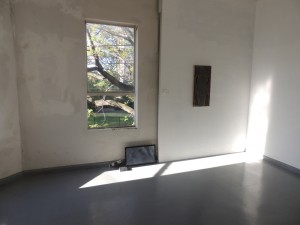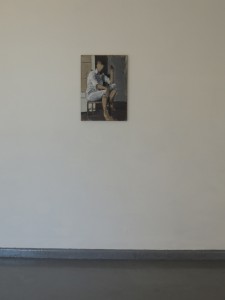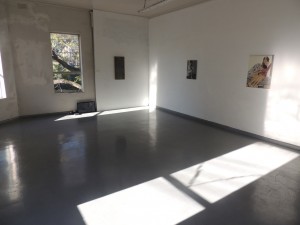In 1991 Sean Penn directed his first film, The Indian runner. It is a story about two brothers. Viggo Mortensen plays the charismatic violent younger brother and David Morse plays the stoic gentle older brother. The film was set in the 1960s, but its sibling themes are timeless, timed well and present a time that has already passed before it even really existed. It is the film where I fell in love with Viggo Mortensen, taking photos off the TV screen to capture his lazy drawling stance, but here his charismatic qualities are a fast fix. ln the film Mortensen’s charisma is finite, as it always eventually blows out into cruel violence. More striking is my memory of David Morse’s performance. It is the quality of his manner I always remember to look out for—the small gestures, the slow pace, and the efficacy of his character (I’ve experienced and sought out these reticent moments wherever I can find them, hearing such a moment in Elliot Smith’s exhalation in Condor Ave, experiencing one in Rosalind Crisp’s awkwardly precise Danse (3) Sans spectacle, and seeing another in Carey Mulligan’s vulnerability in Never let me go). Small things that hold, last, move with you, alongside you. Morse’s performance plays out in extended time through his interactions, small smiles and tolerance of the eccentricities of others, all the while revealing or revelling in his smoothness, as a contrast to the rigidity of his younger brother.
Jonathan Nichols’s recent exhibition Frank Gardner at Lovers plays out like this self-portrait by Sean Penn. The show comprises a video propped on the floor and four paintings. The video resonates with the jarring qualities of Viggo Mortensen, while the paintings play out like David Morse. The video agitates as it captures the Asperger-like hyper qualities of a monkey, a monkey that is absolutely aware of the camera, yet will not meet the lens with a direct gaze. In contrast, the paintings capture a more subtle interaction between the way they each play out as a slow release of experience of time in art and their painted surface.
I have often felt the resonance of a work by Jonathan Nichols after stepping away, when its haunting presence follows me into my everyday existence. These new paintings reference paradoxically fleeting and iconic characteristics in people and implicate a sense of time. The works seem to hover between a kind of sculptural composition of the figure, where the spaces between two arms and legs, or the interplay between two women, or the contrapposto of an ancient and modern figure all throw out propositions about how I might gaze over the artworks, which is then layered up with a fragile construction of colour. Initially the effect is muted, like David Morse smiling and exhaling as he stands with his wife looking at his young son. And just as I have often asked how David Morse as a tall man could convey such sensitivity and repose as the older brother, I question Nichols’s use of colour to draw me in and hold me in the experience of his painting.
Nichols creates this muted or filtered experience in his paintings by exposing the untreated canvas—a dull taupe—and, similar to Bonnard, frugal use of paint. The colours have been created through a careful underlay of paint, which provides a Rothko-like intensity to the hue, but here it is not a repeated build-up of the same colour or tone, but an underlying carrier, whose purpose is to establish and hold the palette on the surface. This slows down the experience of the work and creates shifts and anomalies in the way it plays out during the experience of looking.
David Morse’s performance in The Indian runner is edged with sorrow. The performance has brevity; meaning is conveyed through the character’s existence alone. It is in being itself that Morse relegates space for these qualities. Jonathan Nichols’s work pervades its space. It is work that doggedly commits to these modest yet compelling qualities and through the subtlety of its application generates a complexity that sighs and holds.
Jonathan Nichols, Frank Gardner, Lovers, Melbourne, 17–18 October 2013.





